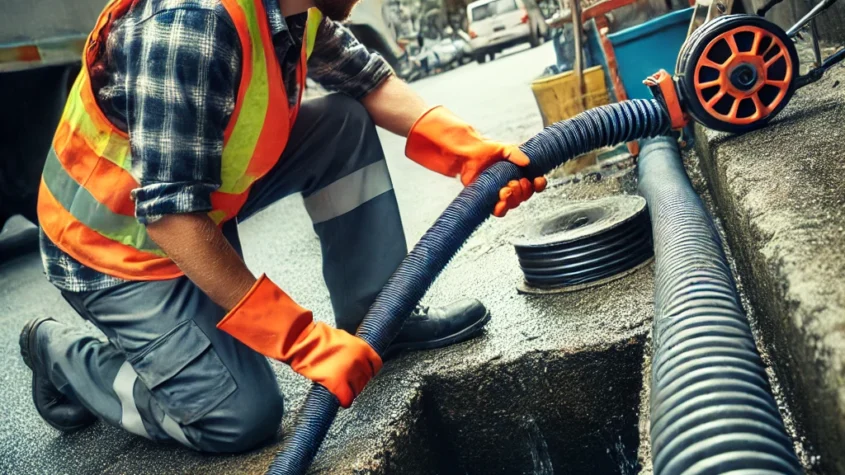
Clogged drains pose a significant inconvenience for homeowners and can lead to serious plumbing issues if not addressed promptly. Regular drain cleaning not only prevents blockages but also maintains the health of plumbing systems, ensuring proper drainage and reducing the risk of costly repairs. Understanding the importance of maintaining clear drains is essential for anyone looking to protect their home.
Many individuals underestimate the need for routine drain maintenance, often waiting until a problem arises. This approach can lead to more severe complications, such as sewage backups and pipe damage. A proactive cleaning regimen can save both time and money in the long run.
By exploring effective methods for drain cleaning, readers can equip themselves with the knowledge necessary to tackle common plumbing issues head-on. Emphasizing practical tips and prevention strategies will empower homeowners to take control of their drainage systems, ensuring they remain functional and efficient.
Drain Cleaning Essentials
Effective drain cleaning relies on a solid understanding of drain anatomy, the ability to identify common blockages, and adherence to safety precautions. Each of these components plays a vital role in maintaining proper drainage and preventing extensive plumbing issues.
Understanding Drain Anatomy
The anatomy of a drain system consists of various components, including drainpipes, traps, and ** vents**. Drainpipes transport wastewater away, while traps prevent sewer gases from entering the home. Vents allow air to circulate within the plumbing system, ensuring proper drainage.
Understanding these components helps in diagnosing issues. For instance, a malfunctioning trap may lead to backups or odors. Recognizing where these parts fit within the whole system enables better problem-solving during a cleaning process. Accurate knowledge aids in selecting the appropriate tools for effective drain cleaning.
Identifying Common Blockages
Blockages often arise from common culprits such as grease, hair, soap scum, and foreign objects. Grease accumulates over time, forming tough clogs within the pipes. Hair can easily catch on rough surfaces, creating a tangled mess that obstructs flow.
Soap scum builds up in the pipes, especially in bathrooms and kitchens. Foreign objects like toys or paper towels may inadvertently be flushed and cause blockages. Regularly inspecting drains can help identify these issues early and minimize costly repairs. Keeping a drain maintenance schedule promotes long-term functionality.
Safety Precautions
When engaging in drain cleaning, safety must be prioritized. Workers should wear gloves and goggles to protect against hazardous materials and debris. It is also crucial to ensure the workspace is well-ventilated, especially when using chemical cleaners.
Checking local regulations regarding chemical disposal is essential. Additionally, individuals should familiarize themselves with the proper usage of tools, including plungers and augers. Taking these precautions can prevent injuries and accidents, leading to safer cleaning practices.
Methods and Techniques
Drain cleaning employs various methods and techniques to address clogs and maintain flow. Understanding these different approaches assists in choosing the right solution for specific drainage issues.
Chemical Cleaners and Enzymatic Agents
Chemical cleaners, often found in liquid form, use powerful substances to dissolve clogs. These products can contain acids, alkalis, or other corrosive agents that break down tough materials like grease and hair.
Enzymatic agents provide a less harsh alternative. They use natural enzymes to digest organic waste, making them effective for kitchen and bathroom drains.
Key Considerations:
- Effectiveness: Chemical cleaners work quickly but can damage pipes if misused.
- Safety: Enzymatic agents are generally safer for both plumbing and the environment.
Plunging and Manual Removal
Plunging involves using a plunger to create pressure that can dislodge blockages. It is a simple yet effective technique for minor clogs.
When plunging fails, manual removal becomes necessary. This may involve disassembling pipes or using tools like a drain snake to physically remove the obstruction.
Important Tools:
- Plunger: A basic tool for initial attempts at unclogging.
- Drain Snake: A flexible tool that can reach into pipes to extract debris.
Professional Equipment and Tools
For persistent or severe clogs, professional drain cleaning services often utilize specialized equipment. High-pressure water jetters can clear out stubborn blockages deep within pipes.
Cameras inspection tools allow technicians to see the condition of pipes and identify issues without invasive methods. This technology helps in accurately diagnosing problems.
Key Equipment:
- Water Jetters: Can remove tough build-ups without damaging pipes.
- Cameras: Provide real-time visuals to guide repairs and cleanings.
Fitterfirst: Enhancing Your Performance and Stability Through Innovative Solutions
Fitterfirst is an innovative company focused on enhancing physical fitness and overall wel…






